When words are not enough…
By Lukáš Redl
Feature image courtesy of Scuderia Ferrari…
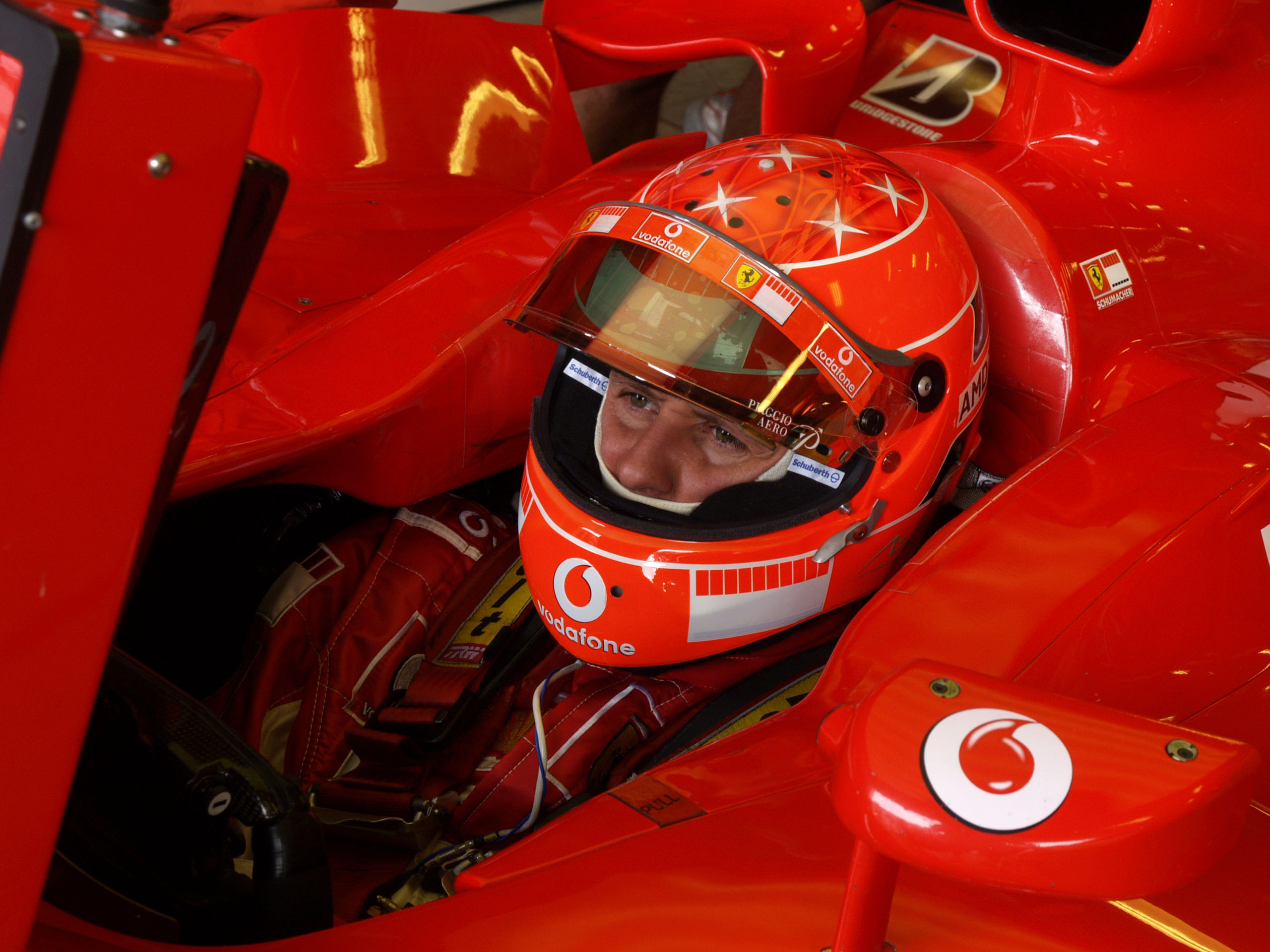
When words are not enough…
By Lukáš Redl
Feature image courtesy of Scuderia Ferrari…
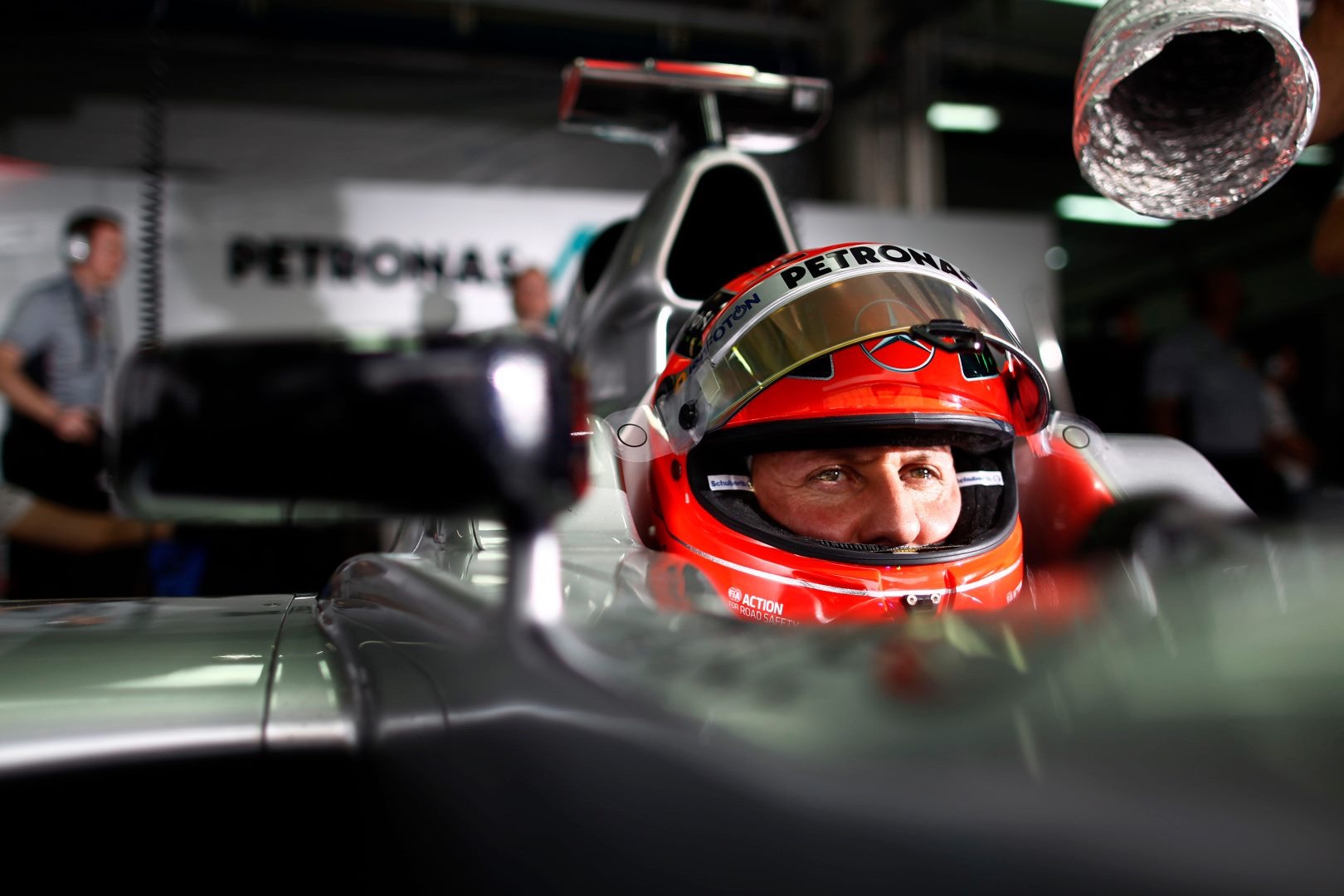 After 268 races, 91 wins, and most coveted, seven world championships, Michael Schumacher retired in 2006 as the most decorated Formula One driver in the history of the sport. He had achieved the pinnacle of success, experienced the highest of the highs, and endured the lowest of the lows. Such is the rollercoaster of emotions that is Formula One, but Schumacher had mastered it with a mix of immense talent, fitness and, at times, deviousness.
After 268 races, 91 wins, and most coveted, seven world championships, Michael Schumacher retired in 2006 as the most decorated Formula One driver in the history of the sport. He had achieved the pinnacle of success, experienced the highest of the highs, and endured the lowest of the lows. Such is the rollercoaster of emotions that is Formula One, but Schumacher had mastered it with a mix of immense talent, fitness and, at times, deviousness.
He therefore left F1, not just as a winner, but as one of the most intense competitors the world of motor racing has ever seen. He is truly the definition of doing whatever was necessary to win.
With that being said, it was perhaps easily foreseeable that he would make his return at some stage – and he did.
Having spent the last 11 years of his first F1 tenure with Ferrari, he worked closely with the team after his retirement, and all eyes were on him making his sensational return with the Scuderia for the start of the new decade in 2010. But Fernando Alonso was chosen as Kimi Raikkonen’s successor, and Schumacher was destined for a greater test.
Having managed the astonishingly dominant Ferrari team during Schumacher’s spell with them, Ross Brawn would help steer the Brawn team to the most inconceivable championship success in 2009, but a lack of funding meant he needed a buyer to sustain a place on the grid for 2010. Good job then, that Mercedes saw their opportunity to make their own sensational return to Formula One with Brawn at the helm.
Having maintained a strong relationship with him at Ferrari, Brawn was able to entice Schumacher into the long-term vision of returning Mercedes to past glory.
And so it was that Schumacher had secured his comeback to the sport he had conquered and mastered before, but was it time to add championship number eight to the tally?
Before the commencement of the 2010 championship, Schumacher stated his intent not to solely make up the numbers, but to win another championship. Partnered with Mercedes new boy Nico Rosberg, it was an all-German line-up for the German team going into their new époque.
It was clear that he had not lost his passion for the sport, and his raw desire to win. He was penalised in Monaco in his first year back for audaciously overtaking Fernando Alonso tantalisingly close to the safety car line at the end of the Grand Prix, but he had displayed the wily nature, extravagance and opportunism that had earned him so much success previously.
He finally earned his first podium since his return at the European Grand Prix in 2012, the same year he set the pole lap in Monte Carlo – although a penalty from the previous race in Spain denied him the front row start.
The on-track supremacy were not the only factor, however. His racing pre-eminence was also defined by his intelligent and cunning mind games. Nico Rosberg described how Schumacher would wait in the toilet during qualifying before the final run to make the eventual 2016 champion wait and effect his mentality and performance – with age had certainly come an abundance of wisdom.
These flashes of brilliance were not the only side of Schumacher’s enigmatic character though. The less alluring and more dangerous side came back with him. It was the same brutal nature that saw him wipe out Damon Hill in Adelaide to claim the 1994 crown in his Benetton days, and that saw him try, in many fans’ eyes, try to end Jacques Villeneuve’s race in Jerez in 1997. This particular attempt was futile however, as Schumacher took himself out of the race and left Villeneuve to take the title.
In many ways, his occasional on-track enmity was as a result of his excellence. His sheer will to win naturally came with an occasionally nasty overtone of jeopardy for those around him, as was discovered by Rubens Barrichello in Hungary when Schumacher very nearly sent him into the wall at speed down the pit straight. Lewis Hamilton was also less than impressed with the German’s antics at the Italian Grand Prix of 2011 – just two examples of Schumacher’s mentality leading him to uncompromising positions, and he overstepped the line on occasion.
It was evident, though, as he got deeper into his forties, that lapses of concentration and perhaps a drop in physical capacity had crept into his game.
Barrichello and Hamilton could argue that their incidents with him were a product of such, but more notable incidents of ungainliness come to mind. He misjudged his braking points in Singapore in 2011 and 2012, spectacularly wiping out Sergio Perez and Jean Eric Vergne respectively, and mych the same happened when trying to overtake Bruno Senna in Barcelona in 2012. And a very clumsy incident with Felipe Massa in 2010 affirms what, if he were a rookie, would probably be described as relative ineptitude. But this is a seven-time world champion, and in reality these moments were perhaps signs that the return may have been misjudged and ill-timed.
He finished ninth, eighth and 13th in the three years he had spent back, and was beaten by team mate Rosberg in all three seasons. He was, however, only an average of 0.2 seconds slower than him in 2010 and 2012, and was actually two tenths quicker in his final season. He had proven that, whilst he did not have the same magic and brilliant race-craft that he had before, he still possessed raw pace.
But ultimately he did not achieve what he set out to upon his return to the sport. He came back and gave it a go, demonstrating the qualities, some more discerning than others, that had made him the most successful of all time. But it was that unrelenting success in his prime that will be remembered, and not the return.
Images courtesy of Mercedes AMG / Wolfgang Wilhelm
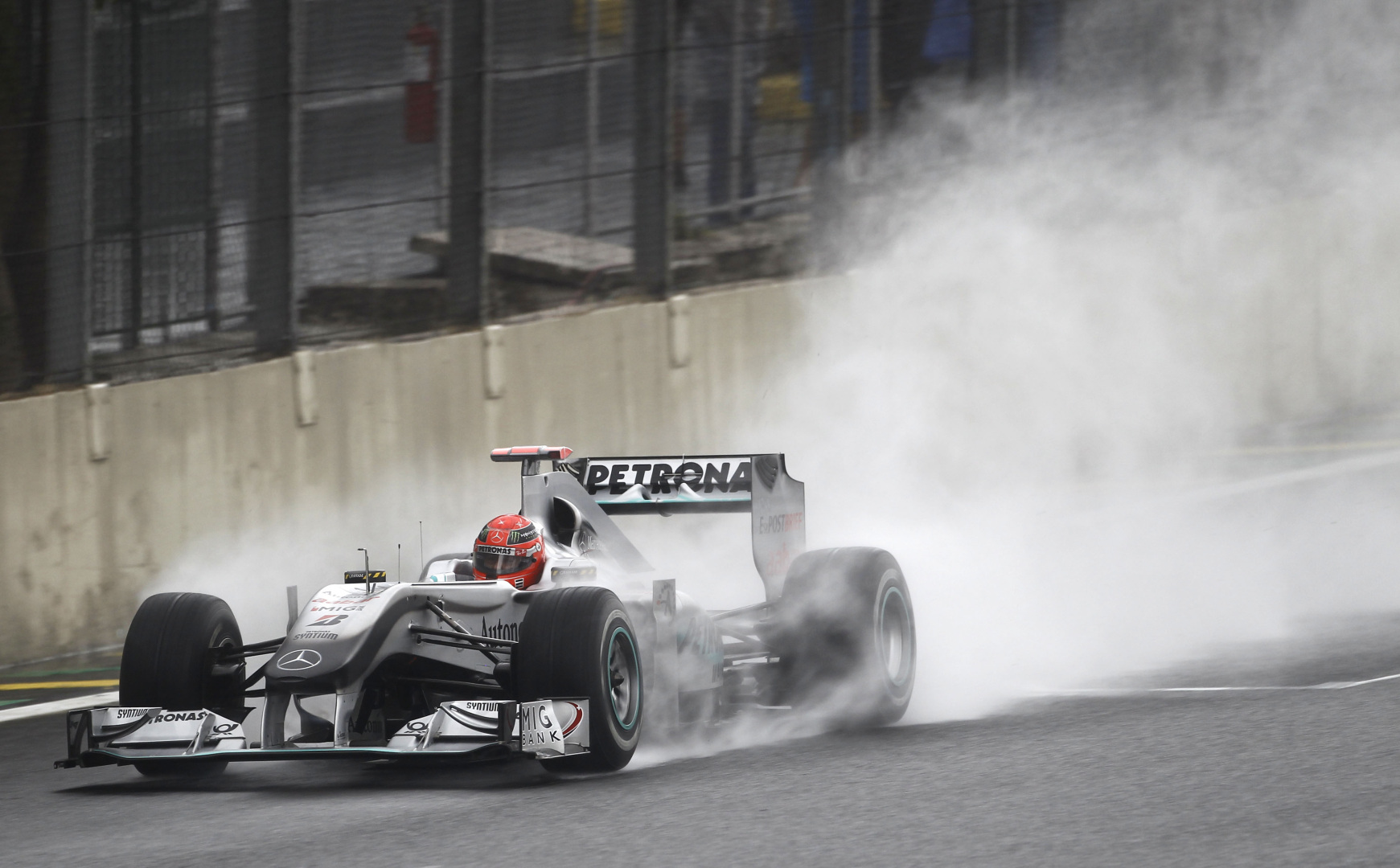
Whilst Michael Schumacher had many incredible races, this is one of my favourites showing his incredible skill in changing conditions.
It was 1997 and it was the 12th race in the season which was taking place at Spa Francorchamps, Belgium.
Qualifying for the race had been dominated by Jacques Villeneuve (Williams-Renault) who secured pole position followed by Jean Alesi (Benetton Renault) in 2nd and Michael Schumacher (Ferrari) 3rd on the grid.
In the morning warm-up the weather conditions were hot and dry and Schumacher only managed 15th place.
However, about 30 minutes before the start of the race, an unexpected twenty minute heavy downpour changed the race conditions dramatically.
During the time the cars were assembling on the grid, Schumacher took the opportunity of making some exploratory laps of the track by returning to the pits rather than the grid in both his race car and the spare car, which had been set up for intermediate weather conditions. Schumacher chose to race in the spare car.
Whilst going to take his place on the grid, Schumacher’s brother, Ralf, who had qualified 6th on the grid, spun and crashed his Jordan at Stavelot, resulting in him starting from the pit lane in the spare car.
For the first time in Formula 1 history, the race was started behind the safety car.
Of the front running cars, both the Williams drivers and Alesi started the race on full wet tyres whilst the others were on intermediates. The pack remained behind the safety car for the first three laps and the proper racing began on lap four. Villeneuve was still in front followed by Alesi and Schumacher.
At the start of lap five, Schumacher made a brave move past Alesi on the inside of the La Source hairpin and then overtook Villeneuve at the Rivage loop to take the lead. By the end of lap five Schumacher had built a lead of 5.8 seconds over Villeneuve. Bear in mind, in real terms it was only the second lap of actual racing. He then continued at a truly unbelievable pace, increasing this to 16.9 seconds by the end of lap six, which in real terms was only lap three. He was truly in a class of his own.
Fisichella, who was driving for Jordan and had also started on intermediate tyres, was now in 2nd place after Villeneuve made an unexpected pit stop.
Schumacher was in control of the race and continued to pull away, and by the end of lap 12 his lead had stretched to a full minute. Following a second pit stop, Villeneuve had dropped to 16th.
The track was drying by this stage in the race and pit stops were taking place for slicks to be fitted to the cars. Schumacher pitted on lap 14 for his slicks and after re-joining the race, he eased his pace and controlled the race. He eventually crossed the finish line some 27 seconds ahead of the 2nd place car of Fisichella, followed by Heinz-Harald Frentzen in his Williams-Renault.
If Schumacher had continued at his original pace, who knows how far ahead of everybody he would have been.
Having started from pole, Villeneuve finished his race in 5th, which meant that Schumacher extended his lead over Villeneuve in the Drivers’ Championship to 11 points with 5 races left in the season. Ferrari led Williams by 6 points in the Constructors’ Championship.
I truly believe that this was one of Michael Schumacher’s best drives and it was at this race that he gained the title ‘the Rainmaster’, which was to stay with him for the remainder of his racing career.
BK
Image courtesy of Mercedes Benz AMG F1 Team.
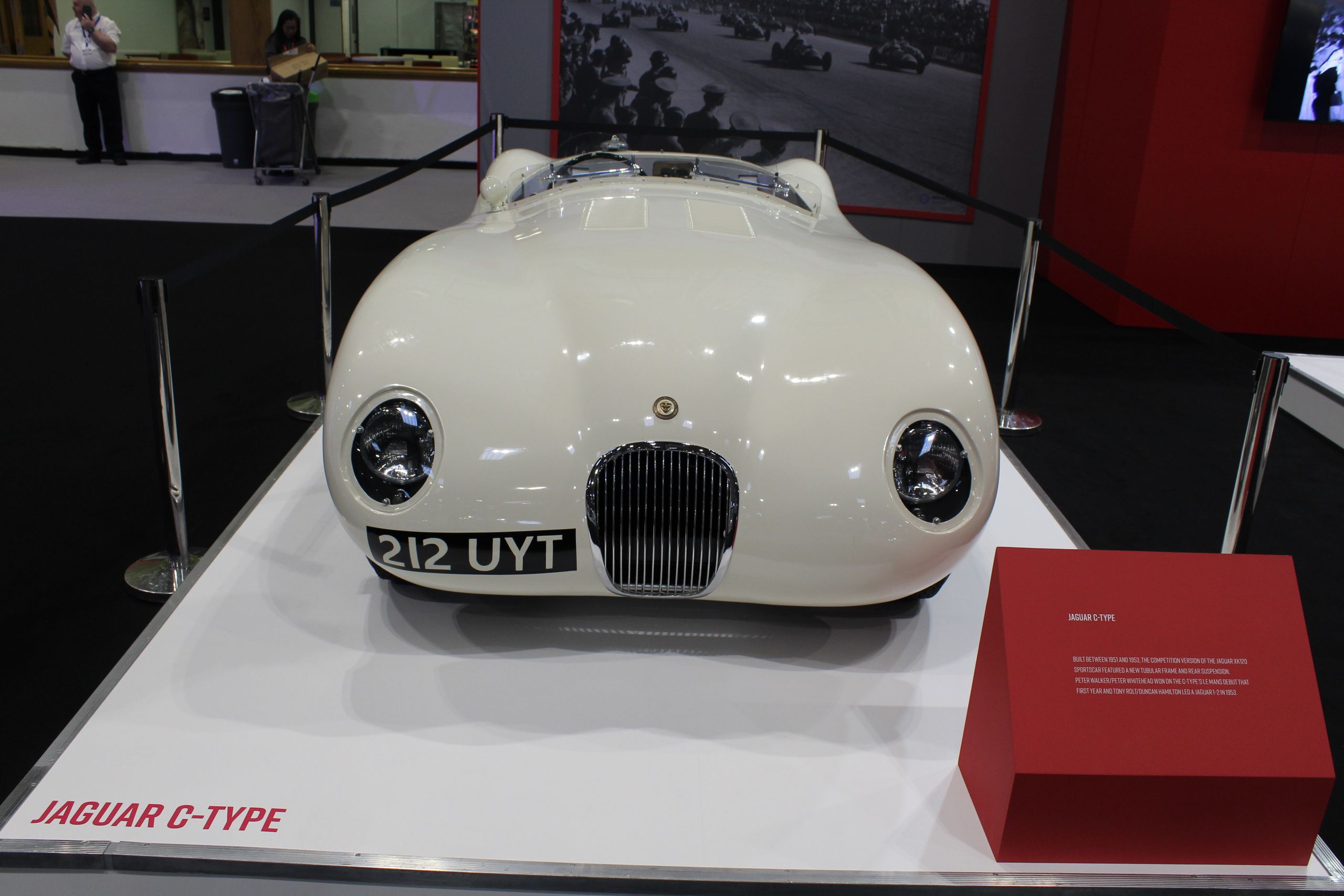
At this years Autosport International Show, there were some pretty iconic cars on display, from all parts of the motorsport world.
The main feature included Seventy Years of Motorsport, and there were some incredibly beautiful cars on display from Le Mans, World Rally Championship, Indycar, British Touring Car Championship, Formula One and Formula E.
All were game changers in their own way.
The decades of the 1950’s, ’60s, ’70s, ’80s, ’90s, ’00s, ’10s are all represented.
Away from there, there were other amazing displays. The Le Mans Toyota TS050 from 2018, the car that finally gave Toyota the victory that it has craved for decades, with Sébastien Buemi, Fernando Alonso and Kazuki Nakajima sharing the driving duties.
There was a display of Formula One cars as well.
Below is a group of classic rally cars – Some iconic machinery here, from the seventies, eighties, nineties and two-thousands. Three cars driven by Colin McRae featured as well.
Well, we hope that you have enjoyed this look back to this year’s Autosport International Show, while we wait for the racing season to re-start.
All photos courtesy of Warren Nel

Sophia Flörsch has what promises to be an exciting season ahead of her. The German racer is making the step up to FIA Formula 3 with Campos Racing, as well as entering several races in the European Le Mans series, including the 24h of Le Mans. She’ll be part of an all-female line-up, sharing the car with Katherine Legge and Tatiana Calderon. We asked Sophia her views on the season ahead, as well as talking budgets and her aims for the future.
Alison Finlay: An exciting year ahead for you Sophia, with an all-female Le Mans entry and Formula 3. What are you most looking forward to this season?
Sophia Flörsch: I’m looking forward to each single race I am able to do to be honest. There is no difference for me between a FIA Formula 3 race or an ELMS race. For me it was really important to be racing FIA F3 this year. The F3 car is great and all 30 drivers are one of the best in junior formula classes. The complete starting grid is very close together. It will be a great season with a lot of learning and fighting for me. Each race weekend has something special. It’s always on F1 weekends which is something new to me. The tracks are great and some are even new to me, like Bahrain or Sochi, for example. As the Red Bull Ring is one of my favourite tracks, I am looking forward to that one in particular. The atmosphere in Austria is one of the best. On the other hand I am going to do ELMS in an LMP2 with Richard Mille Racing and 24h of LE MANS! It will be a new and different challenge for me as it’s endurance racing but it’s going to be great. Of course Le Mans will be amazing. I am really thankful to be able to race there this year. That’s definitely a dream come true. 100 million TV viewers worldwide – wow. This one week will for sure be one which I will never forget.
AF: You’ve tweeted recently about the costs of the junior series. Can you describe the barrier this creates for young drivers?
SF: Well, I think everyone knows that motorsport is really expensive. Even in F1 you see teams having different budgets performing differently just because they do not have the same possibilities. That’s pretty much the same in junior classes. If you are lucky, and your parents can afford the yearly budgets between 1-2m, without any problems, and even pay for you to go testing or keep racing during the winter period, then that’s amazing. You are a privileged driver because of more and better testing and possibilities. But if your family is not able to afford it, you need people to believe in you and support you. Already when you start with F4 people spend up to 800k per year. That’s a big bunch of money. The higher you get, the more expensive it gets. F2 is more than 2m a year, F3 in a top team more than 1.3 to 1.5m. The most expensive cockpit I heard this year is 1.9m – don’t know if it’s true. The [team’s] experience, their race engineers and so on – the better it is, the more expensive it is. So there is a reason why parents are paying the highest price. The struggle is that not having the money you need to perform well [means having] to find people to give you money to race. But to perform well you should be able to go testing as much as the others, or at least drive in a team where you can do good races just because the car is quick enough. But for that you need money… so it’s kind of a circle which you need to try to get out of by having good races, fighting, showing people that it really is your dream and that they are the ones making it possible to live my dream and achieve my goal.
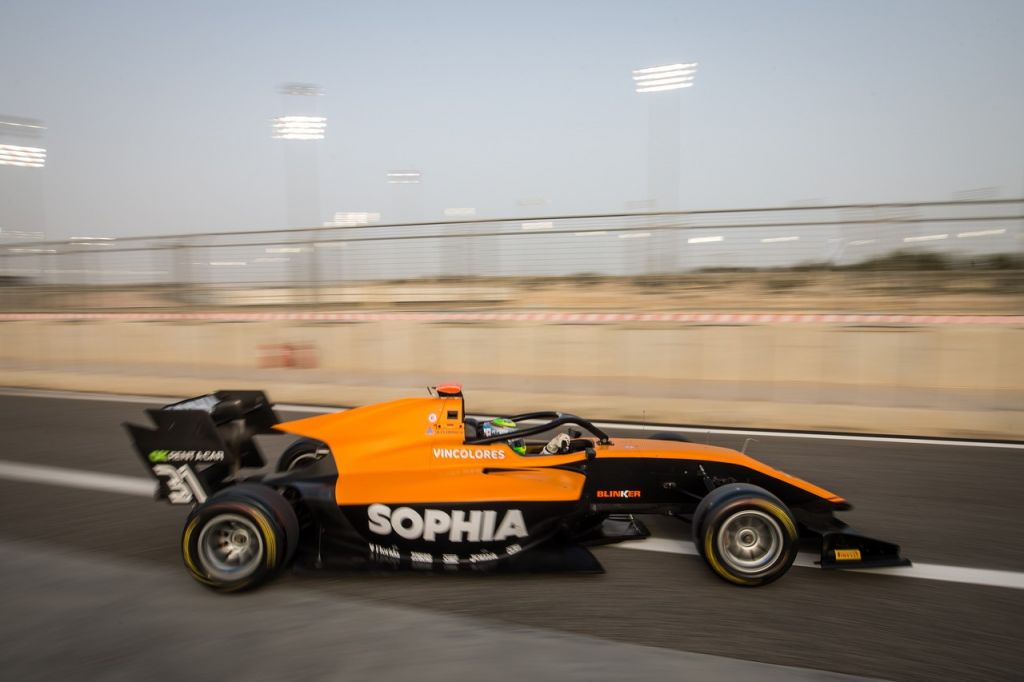
AF: How are you preparing for the 24 hours of Le Mans? And how exciting is it to be part of an all-female entry?
SF: Well, we are racing the ELMS as well which will be two race weekends before Le Mans already. It’s just going to be 4h races but of course that’s already going to help to get a feeling for endurance racing. I will for sure do a lot of simulator preparation to get into the rhythm and focus on long stints. Watching videos and some 24h races from the years before to learn. A lot of contact with the team and the other two women. It’s an huge honour to be racing 24h of Le Mans and also with an all women line up is super cool. We want to perform – that’s our goal to 100%! To get the possibility thanks to Richard Mille and FIA Women In Motorsport is amazing and we will make the best out of it. Of course in an endurance race everything can happen and there are more things you have to take in account, but the luck will be on our side.
AF: Are you happy with your performance in the F3 test? What are your aims for the season?
SF: I am only happy when I am winning a race or I am P1. That’s 100% sure. But to be realistic it was the first time for me back in a formula car again since Macau 2019. Not a single test day during the winter season. No experience on new tyres. And to understand the Pirelli tyres is really important. In those three test days at Bahrain my main goal was to develop myself, work together with the team and get in a rhythm with the car again. I think I ticked those boxes in Bahrain. In testing you never know where you really stand because everyone is doing different tyre strategies and everyone tries different stuff. Free practice and quali will be the sessions when we really realise where we are. As it’s my first season in F3 and as I did not prepare during the winter in F3 there are no high expectations. This season will be a year for me to learn, to get used to the car, to enjoy, to get better as a race driver and to have good races. If I am ending the season with Top 10 finishes and also well performing [well in] quali then I think it should be a good starting point on which to build up for 2021.
AF: What does the future hold beyond 2020 for you, and is it dependent on performance this year?
SF: The plan is to do FIA F3 again in 2021, and after that, two years of FIA F2 with strong partners and an equal backing would be great. That’s how my next years should look. I want to sit in a race car as much as possible. When I make it to be highest class of formula racing, either F1 or maybe than Formula E, I want to be a proper racing driver who has had enough preparation and years in the junior classes. Of course performance is always important. I want to show that I am the quickest. In motorsport this key factor does not just depend on talent. Money and the budget you have for every single season is probably even more important as I mentioned before. To be able to go testing during the winter, or maybe even do another series during the winter, and to race with a leading top team, you need money. That’s what I need to be able to perform and to reach my next goals
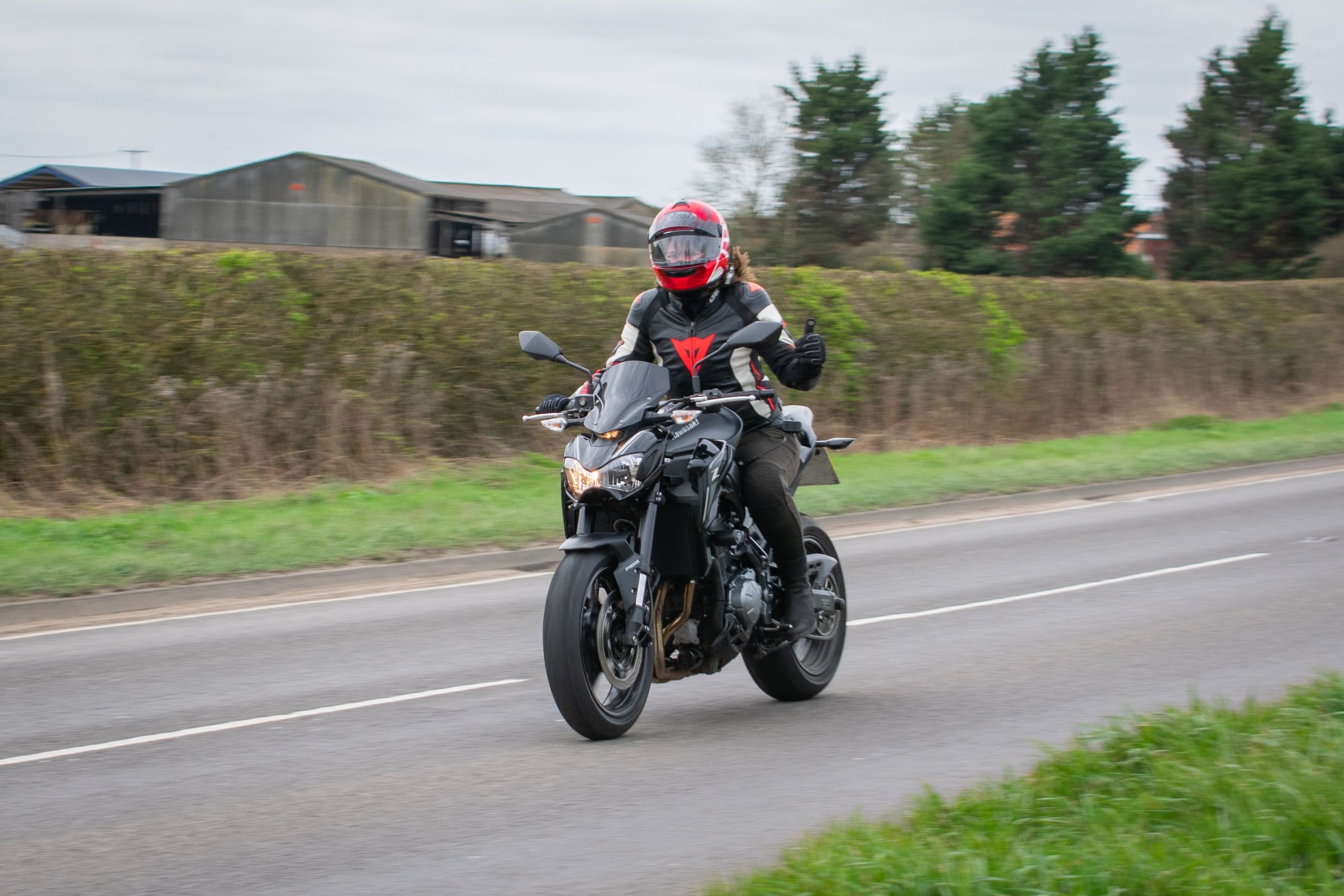
Women have always had a love of two wheels with the start of the bicycle which gave them freedom and mobility and then when motorcycles came along they enjoyed them as much, if not more, as they were economical and fun – a perfect combination.
It was after the introduction of front and rear shocks that people began to consider riding for longer distances and in 1915 a mother/daughter team, Avis and Effie Hotchkiss covered some 5,000 miles riding from New York to San Francisco and the following year, two sisters, Adeline and Augusta Van Buren rode up and down Pike’s Peak on a pair of Indian Powerplus Bikes covering some 3,300 miles over two months. Can you believe that they were arrested at one point for publicly wearing trousers!
In the 1920’s, Bessie Springfield, who was known as the Motorcycle Queen of Miami, couldn’t get a motorcycle licence to start with until a police officer intervened on her behalf. She then went on to make 8 solo cross country trips and was a dispatch rider. Can you imagine today not being able to go and get a motorcycle licence simply because you are a woman.
Of course during the war, women played a vital role many of whom were motorcycle disptach riders delivering urgent messages and orders between headquarters and military units at a time when telecomunications were limited and insecure.
In the 1930’s motordromes or ‘wall of death’ were increasing in popularity. This is basically a giant barrel which riders on their motorcycles, commonly known as ‘daredevils’, ride around the inside of the walls at speed. There is a giant platform at the top for spectators. Early lady daredevils were Margaret Gast, also known as ‘The Mile a Minute Gal’, May Williams and Jean Perry.
By 1940 The Motormaids had been established which was the first women’s motorcycle club in the US. Today there are hundreds.
How or why do women get into riding motorcyles? Well pretty much how or why the same reason that men do. Because their other half rides; their mum/dad used to ride; their mates ride, transport to work. Just because they want to.
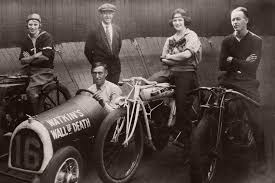
For me, my journey into motorcycles progressed from my love of anything with an engine in it. I used to compete in off road motorsport for a number of years. I have had several classic cars. I have always liked bikes but my parents would never let me have one.
I used to go pillion with a friend and after a while I thought ‘I want to ride a bike myself’.
I told my other half that I wanted to get my bike licence and he said it was too dangerous and I wasn’t allowed to!
So I did what any normal petrol head girl would do – I went and did my CBT and bought a bike to learn on without telling the other half. Six months later I passed my test and bought a Honda Hornet 600. I now ride a Kawasaki Z900 and an MV Agusta Brutale 910.
I have now been riding for 6 ½ years and I absolutely love it, I wish I had got my licence years ago. I try and get out for a ride most weekends. I have been on three European holidays and already have two more booked for the coming year.
In the short time that I have been riding I have seen a rise in the number of women riding motorcycles and the bikes geared for women, for example, lower seating positions available, modern lighter bikes have also made it easier. Of course, woman are just as capable of riding the same bike as a man just as a man can ride the same bike as a woman.
Also on the rise is the range of clothing and accessories available for women. Indeed when I first started riding I found it hard to find clothing that would give me the protection I need whilst offering me comfort, style and value for money.
I am pleased to say that over the years manufacturers have stepped up and woken up to the fact that women are a big part of the motorcycle community and what a fabulous, welcoming community it is and one that I am proud to be a part of.
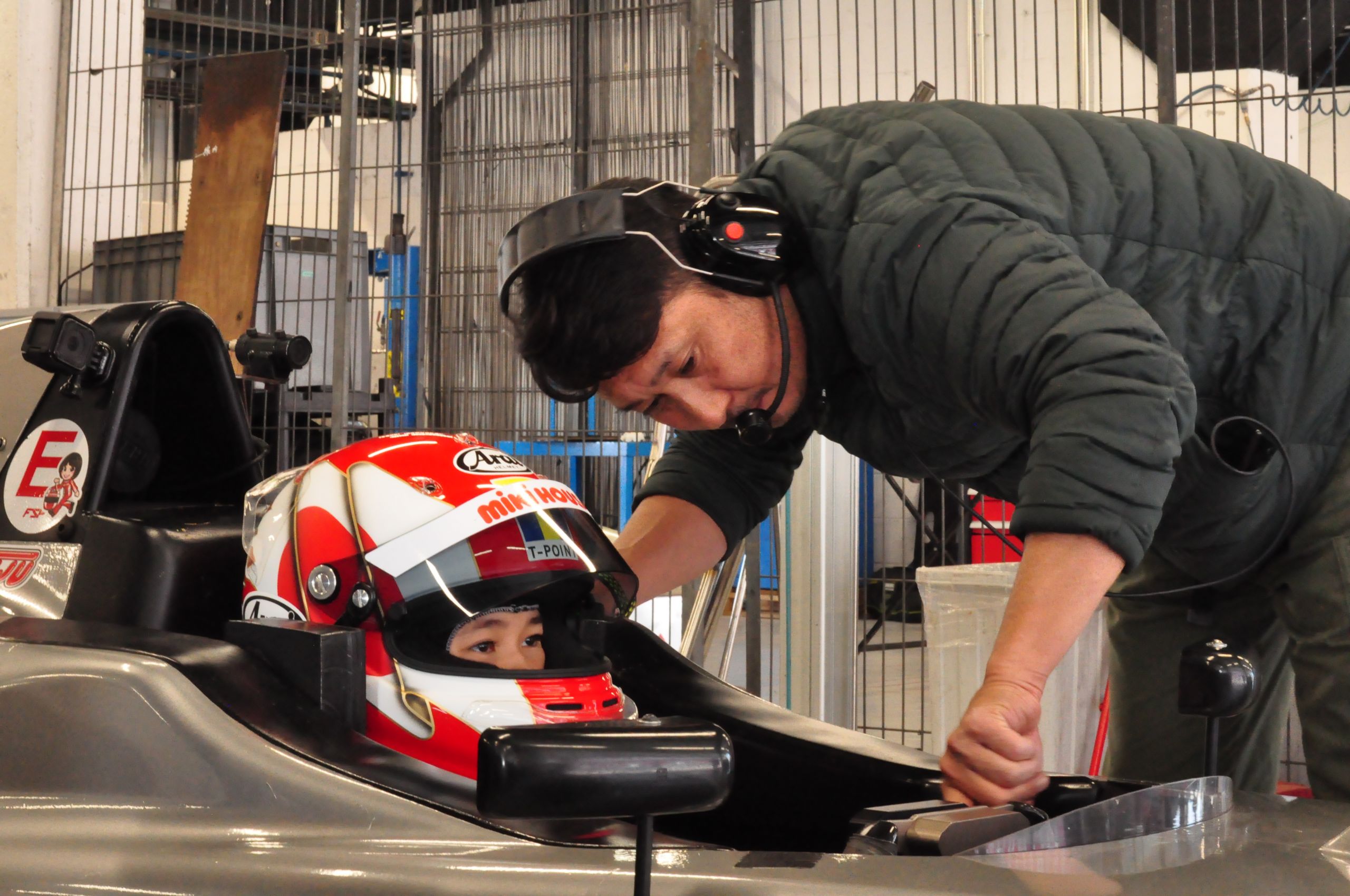
Juju Noda has a lot of pressure riding on her young shoulders.
The Japanese star – who turned 14 last month – has received a lot of international attention over the past few years as a result of driving various single-seaters in her home country despite her young age.
By the age of nine she had already tested F4 cars, holds the F4 lap record at the Okayama International Circuit, drove a Formula 3 car at the age of 12, and competed in a Japanese category called Formula U17, which uses F3-spec cars, when she was 13. Bear in mind, Max Verstappen was 16 when he first drove an open-wheel car.
Unable to progress any further in Japan until she is 16 due to minimum age restrictions, Noda has moved to Europe for the 2020 season, where she will be competing in Danish F4, and was kind enough to speak to us for International Women’s Day here at The Pit Crew Online.
Jenny Rowan: How would you reflect on your 2019 season?
Juju Noda: It was a very good season. I managed to drive F3 hard and I even managed to break lap the lap record of F3N Class (Dallara F312 with Volkswagen Cox engine) at Okayama International Circuit. I also won all four races of the season.
JR: There has been a lot of hype surrounding you and your career – how do you feel about the attention you’ve been getting and how do you deal with it?
JN: I think it is something necessary if you want to be competitive and professional. If you cannot deal with it, that means you are not good enough. To be honest, sometimes it is a bit hard to handle but I always do my best.
JR: Do you see your age as an advantage or a disadvantage when it comes to competing against drivers who are potentially several years older than you?
JN: In the future it will be an advantage but right now it is not. Instead, there are many limitations regarding what to drive and where to drive and it is a bit inconvenient.
JR: Have you already tested the car you’ll be driving in Danish F4 and, if so, how did it feel?
JN: Yes, I drove it in Spain in January and February. The car is quite heavy and not very forgiving but I must get along with it if we want to be competitive. I feel like I want to be friends with it and get along well!
JR: What ambitions do you have for the 2020 season?
JN: I want to learn and enjoy the season as much as possible. Hopefully towards the second half of the season I can be competitive. But I don’t want to be impatient.
JR: What are your ambitions more widely regarding your career?
JN: I want to be one of the best drivers in the world and reach places like Formula 1, Formula E, Le Mans, IndyCar or NASCAR. I will do my best to succeed!
Featured image courtesy of Sergi Garcia”
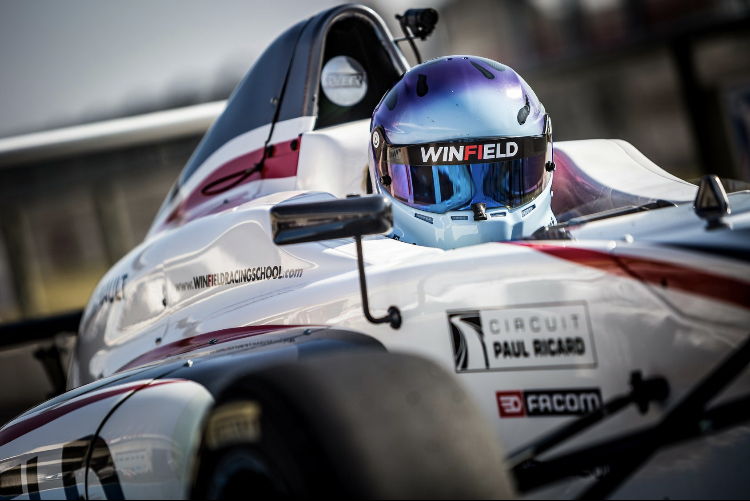
I’ve been in motorsport for just four years now and if it weren’t for my mum and dad, I doubt I would have even thought about getting involved in it to be honest.
Since starting I’ve raced very few girls in karts or cars, and I’ve often talked about why there aren’t many of us in it to my parents. My feeling is that parents of boys and girls have historically chosen to keep with stereotypical roles, so the boys might get taken karting and girls to dancing or stuff like that. I think it’s changing but it needs to change rapidly and at an earlier age, and that way teams, organisers and the like will understand that girls are every bit as worthy as boys, they can be as fast as boys, faster even, and that the physicality side of driving any race car is not beyond a girl. We are equally good.
I’ve been lucky enough to have great support from another female driver, Indy 500 driver Pippa Mann. Initially that came from a chance she gave to six deserving young drivers through her scholarship with the Lucas Oil School of Racing, but since I proved I had serious pace, she’s gone way beyond to help me reach my potential.
Shift Up Now, run by Lynn Kehoe and Karen Salvaggio, is a collective of women helping women in motorsport for whom I became an ambassador from 2019 onwards. They too have been supportive of me and a number of other girls through their tireless work to get more girls into better cars, more often. Without people like Lynn, Karen and Pippa, there are a lot of girls who wouldn’t be driving anything at all by now, so imagine what number of girls would be getting behind the wheel of a car or kart if more of us did the same. If just a few more drivers have their time to helping other young drivers develop, or even start something that helps you g girls get into Karting then the chances of a girl reaching F1 and IndyCar would be massively increased.
But motorsport isn’t just about drivers, it’s about so many other roles too, such as engineers, data analysts, mechanics, team owners, bosses, crew chiefs – the list is endless, and all can be filled by women. It’s very cool that diversity is coming through into these jobs and more and more girls are seeing their dream jobs in motorsport materialise more and more frequently.
I very much hope to push my career as a driver further and further up the ladder to F1 or IndyCar for myself, but in doing what I’m doing, and every other female racing driver out there doing the same, we’re showing young girls that they can get involved in racing and be great at it and hopefully, we are also changing the way people perceive the motorsport world too.
If you want to learn more about Emily, visit her website www.emilylinscott.com or her social media channels
Insta emi_racing
Twitter: @emily_linscott
FB: @emilylinscottracing